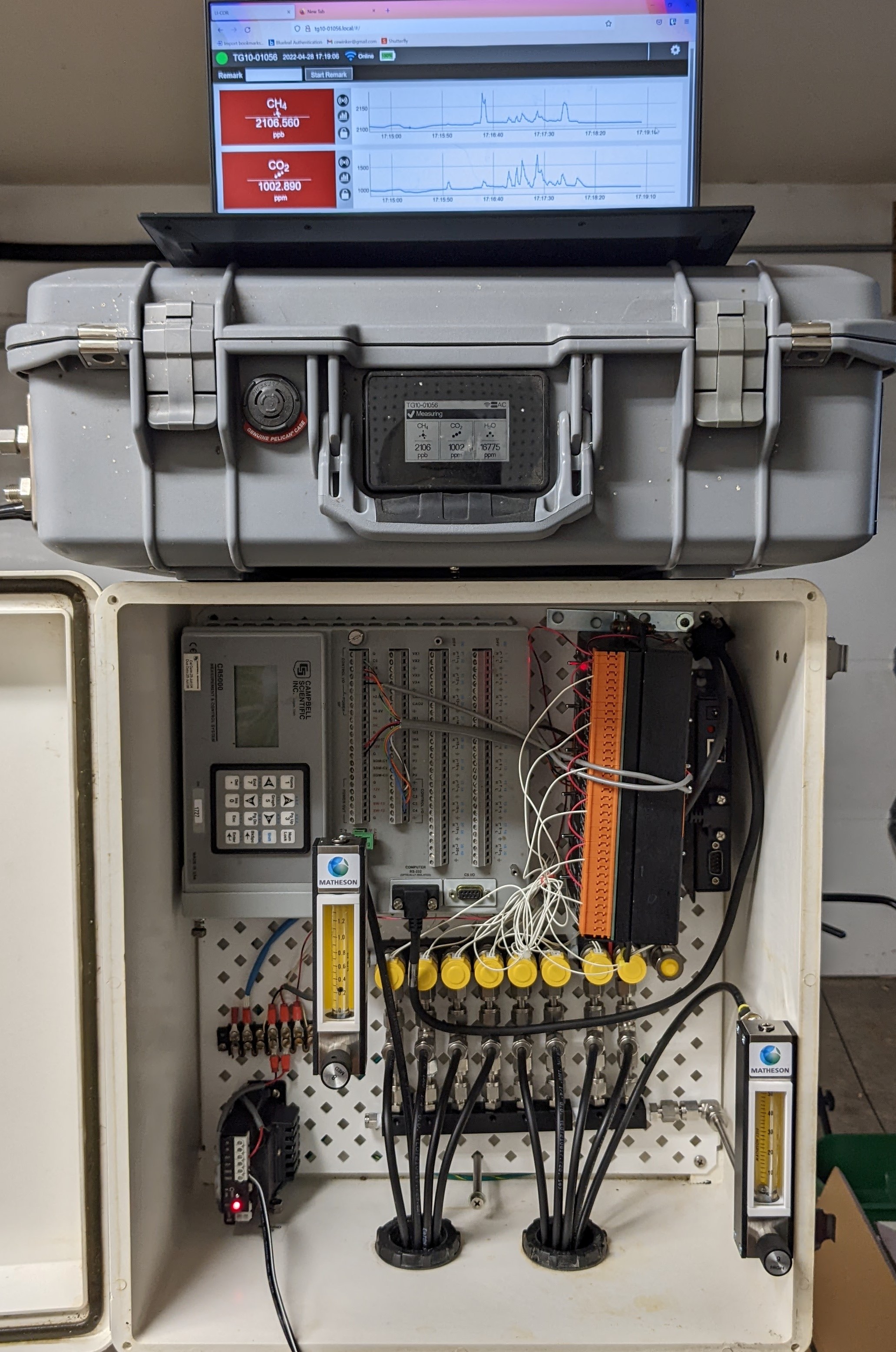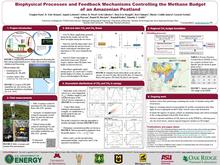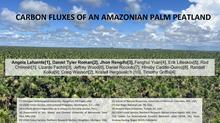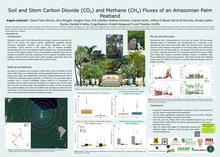
The study site is located at Quistococha on the outskirts of Iquitos, Loreto region, Peru. Quistococha is a natural protected forest reserve and an official scientific research area for IIAP. The EC flux tower (42 m tall with instruments mounted at 40 m) is located at 73° 19' 08.1" W; 3° 50' 03.9" S within a pristine palm swamp peatland that is within the reserve.
The major vegetation type is Mauritia flexuosa (moriche palm, or aguaje in Spanish, reaching 22 m height). This palm species is the dominant species over a large part of the Pastaza-Marañon basin, with palm swamps covering an estimated 27,732 km2, and is indicative of minerotrophic peatlands and floodplain forests that are seasonally or intermittently inundated by the flood waters of major rivers. Aguaje has been under major anthropogenic pressure within the region for its valuable source of palm fruits, with destructive harvest reducing population density in unprotected forests. The mean annual temperature at the site is approximately 25°C with annual precipitation of about 2740 mm. The site is characterized by a long wet season and a shorter dry season (June-August). The water table position at this site is located at or near the peat surface for much of the year. The underlying peat layer has an average thickness of 2.45 m.
The project objectives are to:
A. Evaluate and modify algorithms within the Energy Exascale Earth System Model (E3SM) land surface component (ELM) to improve its ability to simulate CH4 production and consumption in tropical peatlands and assess potential feedbacks acting between hydrometeorological forcings and the carbon balance of these neotropical peatlands.
B. Determine the magnitude of the inter-annual variability of the CH4 and CO2 budgets and examine how hydrometeorological and ecophysiological factors influence these budgets;
C. Assess how much CH4 is produced and transported to the atmosphere via living and dead trees compared to the diffusive flux from peat soil and ebullition events;
D. Examine the importance of anaerobic oxidation of methane (AOM) in determining the CH4 budget and evaluate its representation in ELM;
E. Determine how photosynthetic and respiratory activity varies through time and space and how they influence the CO2 and CH4 budgets at short (hourly) to inter-annual timescales;

Figure 1. Experimental and E3SM modeling approach illustrating the links among experimental process studies and Earth System Model development, validation, and forecasting. The flux tower is associated with eddy covariance and inverse Lagrangian budget analyses, of which the latter can be used to resolve the vertical source/sink distribution of different gases through the canopy space. Chamber and carbon isotope based observations will be used to bridge our process understanding and constrain emissions from top-down (flux tower) observations and Earth System Modeling of CH4 diffusive flux, ebullition, plant-mediated emissions, and anaerobic oxidation of CH4. Satellite sun-induced chlorophyll fluorescence observations will be used to place the ecosystem-level productivity within the regional context.

Chamber Sampling System
Profile Sampling System


Posters and Presentations


2022 AGU Presentation - Carbon Fluxes of an Amazonian Palm Peatland

Application of the E3SM Land Model for Simulating Carbon Fluxes in an Amazonian Peatland
Minnesota Supercomputing Institute
Modeling Greenhouse Gases in a Tropical Peatland
U.S. DOE Highlight
Torre Quistococha Videos
Ameriflux Site: PE-QFR
https://ameriflux.lbl.gov/sites/siteinfo/PE-QFR